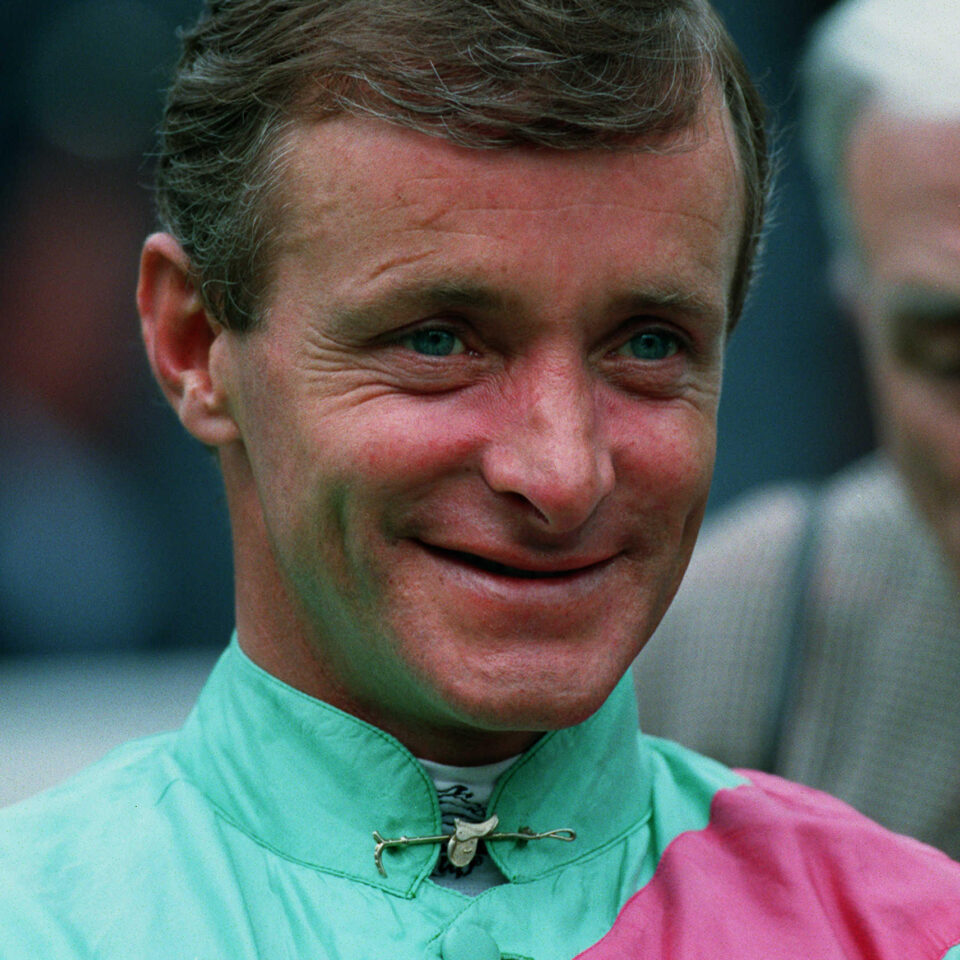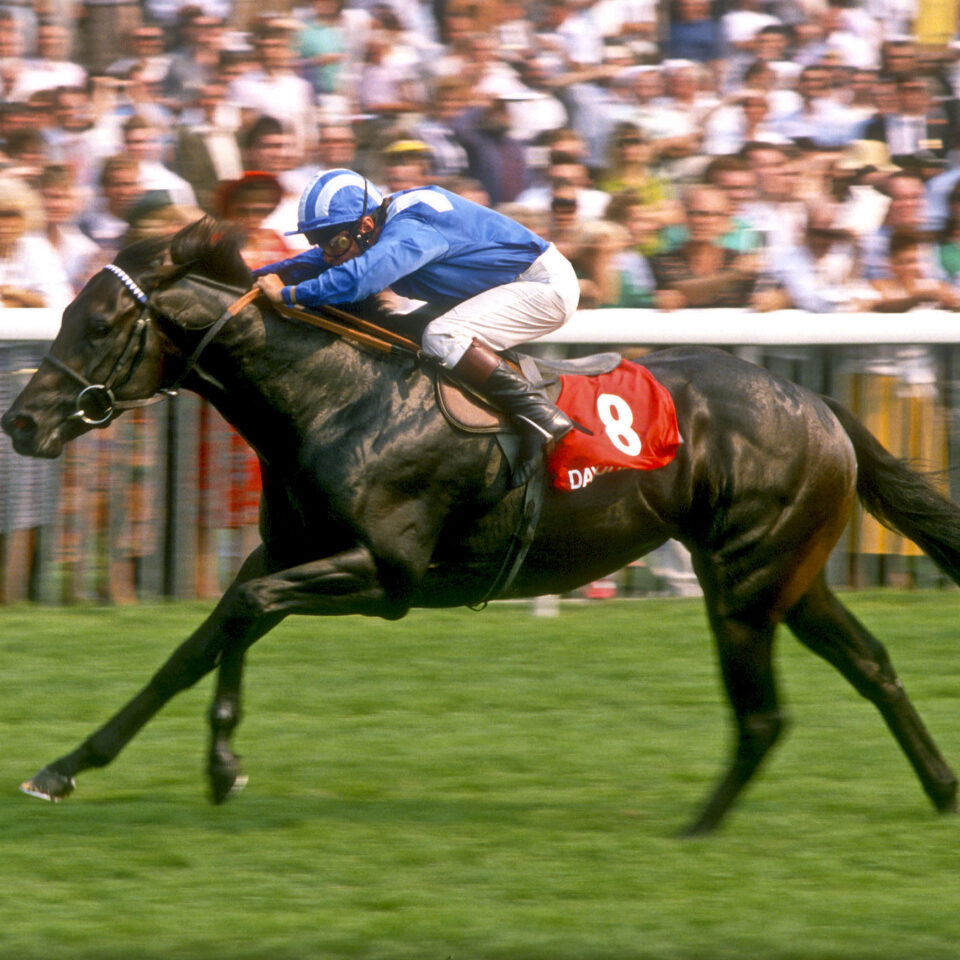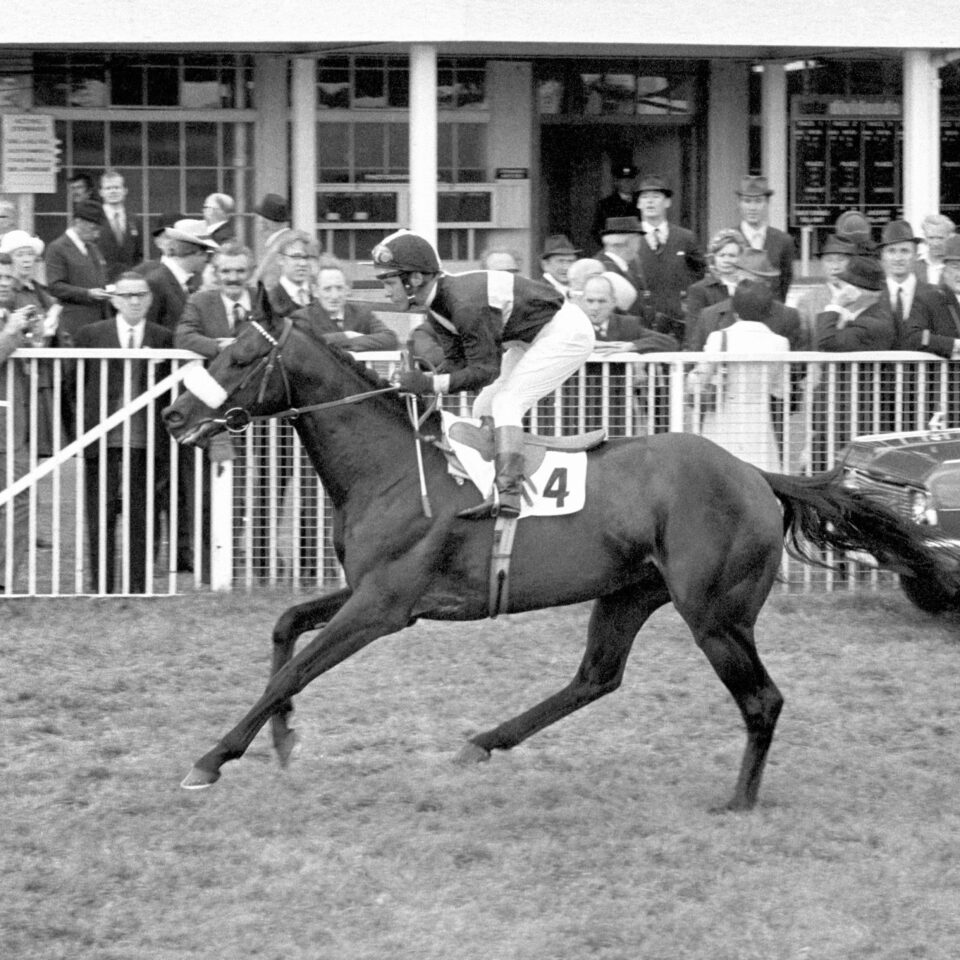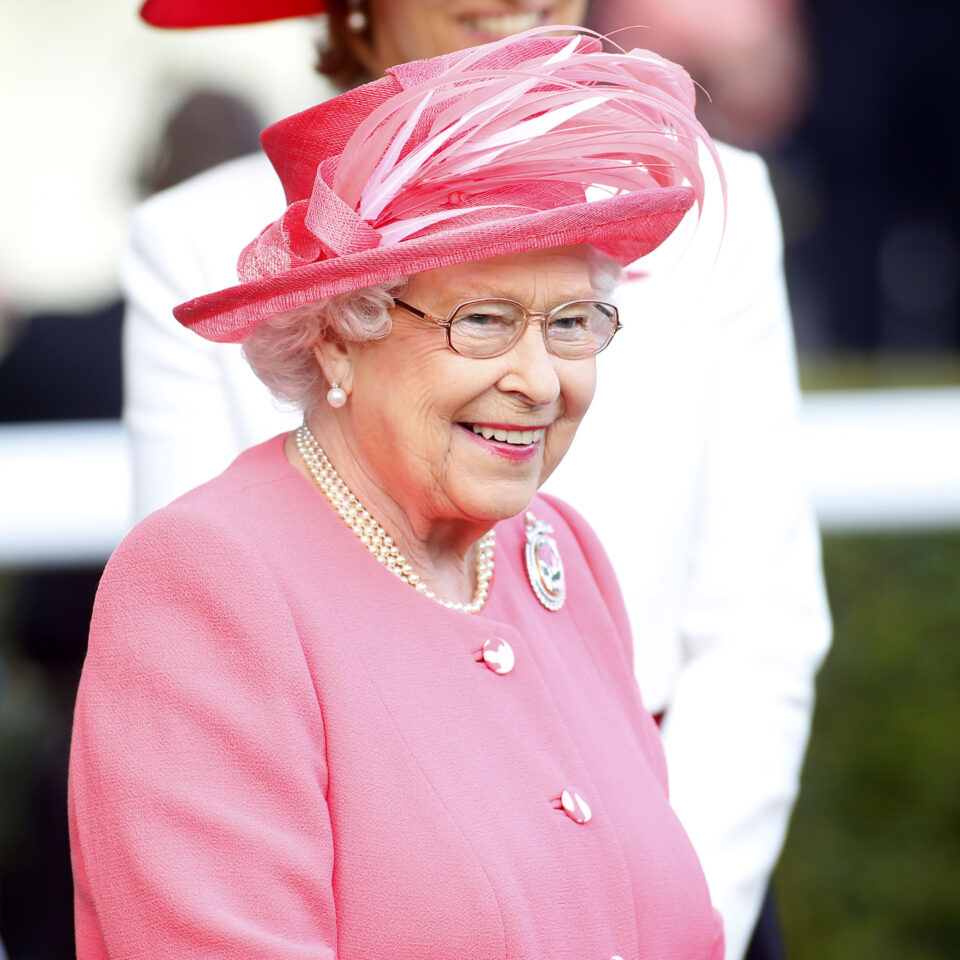
Lester Piggott – The Master of the Derby
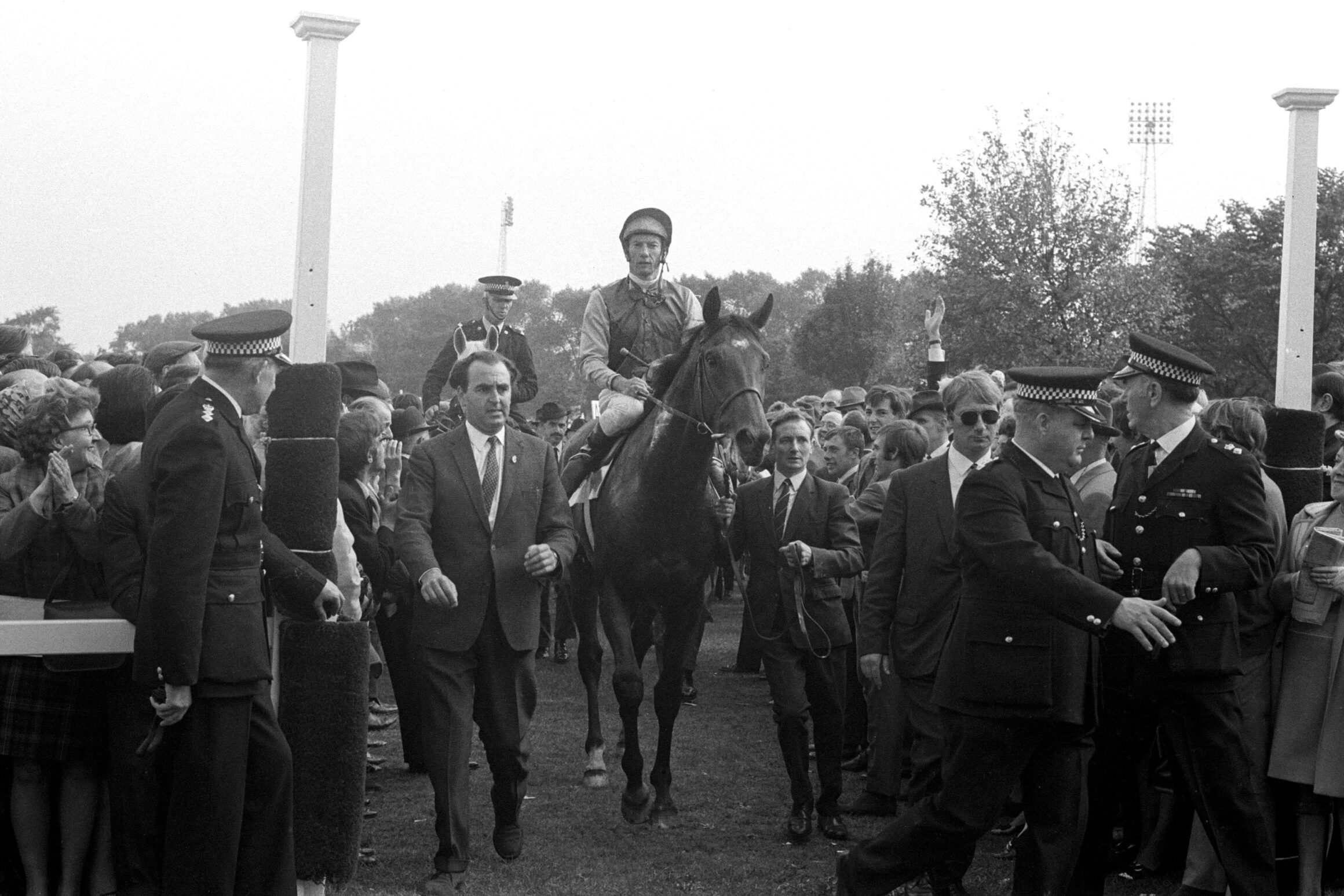
Some great sportsmen and women enjoy fleeting moments at the top of their sport. Others dominate for years and a celebrated few rule the roost for a decade or two. And then, there is Lester Piggott.
The legendary jockey, inducted into the QIPCO British Champions Series Hall Of Fame last month, rode his first winner at the age of 12 and his last, and 4,493rd, when 58. In between, came 30 triumphs in British Classics. That total included a record nine victories in the greatest race of them all, the Derby, first run in 1780. To put that into perspective, 26-time champion Sir Gordon Richards won Britain’s premier race just once. Frankie Dettori, at 50, has landed it only twice.
Epsom’s Derby course presents the ultimate two-and-a-half-minute challenge for horse and jockey with its twists, turns, cambers and (before the pandemic) bulging crowds. Piggott was in his element there and his victories on Never Say Die (1954), Crepello (1957), St Paddy (1960), Sir Ivor (1968), Nijinsky (1970), Roberto (1972), Empery (1976), The Minstrel (1977) and Teenoso (1983) collectively showcased all his skill, nerve, tactical acumen and genius.
He became the jockey everyone wanted but it didn’t begin that way. Joe Lawson, the trainer of Never Say Die, approached several senior members of the weighing-room to ride his colt but met with rejection. Few gave him much chance. That including his veteran American owner, Robert Clark, who did not consider it worth his while travelling over to watch.
Piggott was Lawson’s third or fourth choice. Having accepted the ride, Piggott wasted no time advising the trainer to leave off all the various devices used to try and prevent the horse from adopting his usual habit of hanging left. The 18-year-old, from a background steeped in racing history, recognised it would be an advantage around Epsom.
Never Say Die went off at 33/1 but gained a relatively straightforward two-length success. Piggott, already riding in the race for a fourth time, quickly had him perfectly positioned before quickening ahead two furlongs from home. Such a ride was to become his signature.
Lester Piggott had become one of the youngest jockeys to win the Derby but there was no chance of the success going to his head. His celebratory meal was tomatoes on toast. As usual, he was in bed by about 9pm. However, he was curious to see exactly how he prevailed and in his book, Lester’s Derbys, revealed he watched a re-run of the race in a Reading cinema a week later after arranging a private showing.
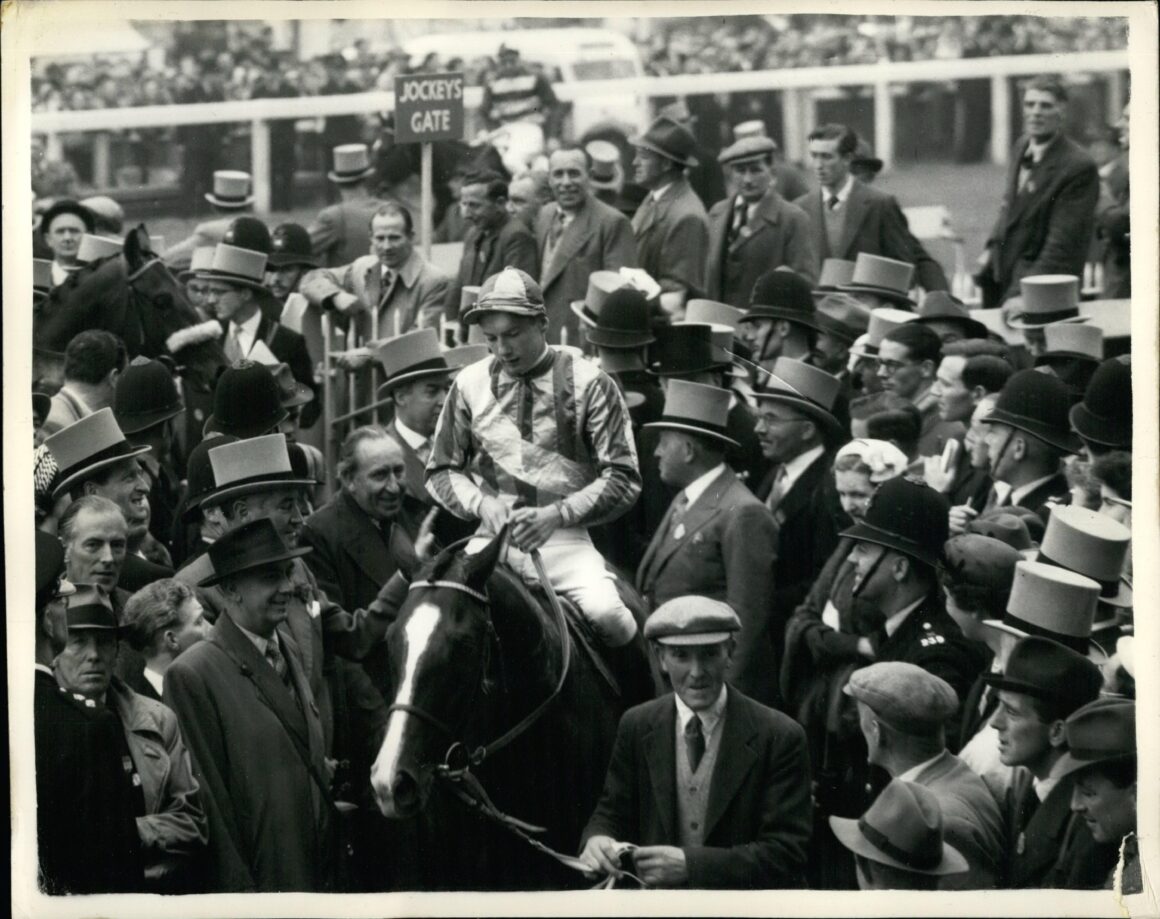
Lester Piggott’s next two Derby rides were outsiders who failed to make an impact. It was a different story in 1957 though, when he partnered 6/4 favourite Crepello for Sir Noel Murless. The brilliant chestnut, owned by Sir Victor Sassoon, had won the 2000 Guineas on his reappearance. His stamina-laden pedigree suggested he would be even more potent over middle distances.
Sassoon was so delighted by Crepello’s victory that he gave Piggott his Lincoln Continental, a vast American car, as a gift. Piggott had a minor accident in the vehicle soon after and, when discovering it required a new radiator from the USA, decided it was not for him. Riding Derby winners, it seemed, was much easier.
Three years later, Lester Piggott again combined with Murless and Sassoon to win the Derby with 7/1 chance St Paddy. It was trademark Piggott as got into a good position and kicked on when rivals either struggling to keep up or out of their ground. The winning margin of three lengths might easily have been more.
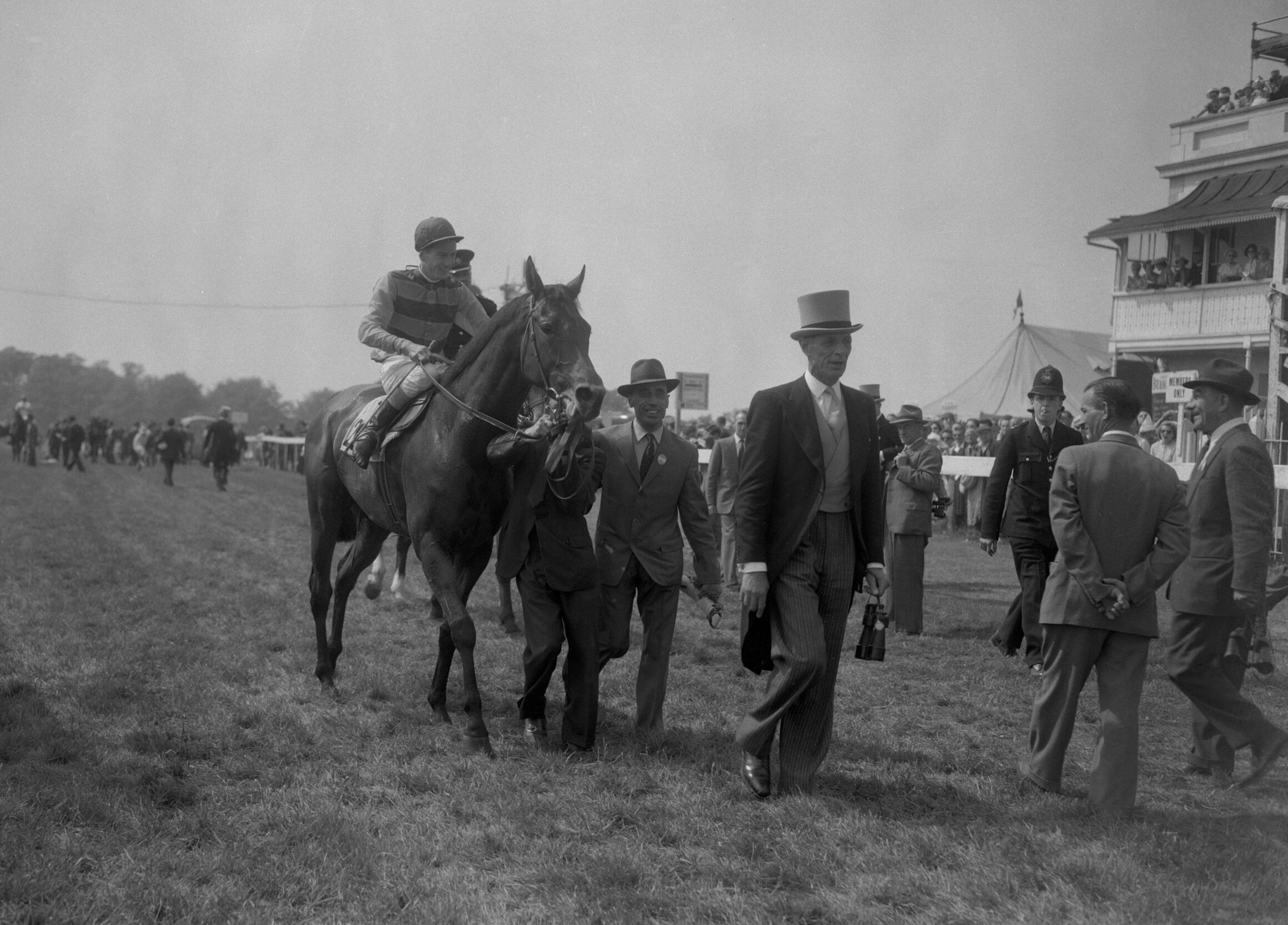
Lester Piggott would have to wait until 1968 for his next Derby winner, Sir Ivor, trained by Vincent O’Brien. It was worth the pause as the gorgeous dark bay followed up his 2000 Guineas win in scintillating fashion.
Sir Ivor’s speed enabled him to move easily through the contest. He still had about four lengths to find on the enterprisingly ridden Connaught a furlong from home. Piggott never deviated from Plan A, which was to bide his time and pounce late on a horse whose pedigree hinted he might not stay. The response was electric. When Sir Ivor was finally asked for maximum effort, he flew home to win by a length and a half. Lester Piggott admitted in retirement that it was his most exciting Derby.
Two years later, Piggott and O’Brien combined to win again with another exceptional colt in Nijinsky. This was a magnificent looking racehorse who had speed, stamina and charisma but his imperious displays masked a temperament that required delicate care and understanding.
The unbeaten Nijinsky had been a superb 2000 Guineas winner and started 11/8 favourite at Epsom. He faced stiff opposition from home and abroad. Piggott was more anxious about the preliminaries, his stamina and ability to handle the track. He need not have worried as Nijinsky beat the strongly-fancied French challenger, Gyr, by two and a half lengths with something to spare. Piggott and O’Brien were invited up to the Royal Box, to be presented to the Queen, and Nijinsky would go on to land the Triple Crown. Fifty years later, he remains the last horse to have achieved the feat.

A record-equalling sixth Derby win for Piggott, matching Jem Robinson (1817-1836), came aboard the O’Brien-trained Roberto in 1972. Owner/breeder John Galbreath had caused something of a furore by snapping up his services days before. Up to now, Piggott’s wins had been gained with a degree of comfort but this was different. He and Roberto, the 3/1 favourite, scrambled home by a short head from Rheingold after a frenetic finish. The protagonists collided near the finish and the result was only confirmed after a lengthy stewards’ enquiry.
Piggott was runner-up on Cavo Doro, who he also bred, the following year. Three years on he again topped the bill as he guided the French-trained Empery to an emphatic three-length success at 10/1. Piggott was at his vintage best in the 22-runner field, being in the right place at the right time swinging for home before turning the screw on the resolute galloper. By contrast, hot favourite Wollow, endured a troubled run and appeared not to stay.
Twelve months later, Piggott raised the bar even higher with a pulsating victory on The Minstrel for O’Brien and owner Robert Sangster. The small but flashy chestnut with four white feet and white face had been placed in the 2000 Guineas and Irish equivalent but was considered a doubtful stayer. His pursuit of Hot Grove in the straight looked like being in vain. But, The Minstrel mirrored Piggott’s determination and prevailed by a neck at 5/1.

The Derby king had one more ace up his sleeve. The Geoff Wragg-trained Teenoso (9/2) provided him with his last hurrah in 1983. It looked a wide-open renewal and the unusually heavy going muddied the waters. Piggott knew Teenoso’s strength was his stamina and wasted little time taking a prominent position. Five furlongs out, Piggott was looking around for dangers. Confident in Teenoso’s ability to keep galloping, he sent him for home three out. The result was never in question from then on.
Piggott would ride in the Derby on six more occasions (taking his overall tally to 36), his swansong being on Khamaseen for John Dunlop in a 25-runner renewal in 1994. He went off at 33/1, just as Never Say Die had 40 years earlier. Piggott gave his legion of supporters a great run for their money and was second turning into the straight but his mount simply was not quite up to the task and faded to be fifth.
The Lester Piggott Derby story had one more unexpected chapter. Aged 60, he partnered Shaamit on the Newmarket gallops in April for his son-in-law, William Haggas, and encouraged him to supplement the inexperienced colt for the Derby after liking what he felt underneath him. Shaamit was duly added to the field and would win under Michael Hills. Not quite a tenth Derby winner for Piggott, but definitely an assist.
It seems inconceivable that his amazing record will ever be matched and the Derby meeting rightly never passes without his amazing exploits being remembered. He has left nine indelible marks for racing to savour forevermore.


